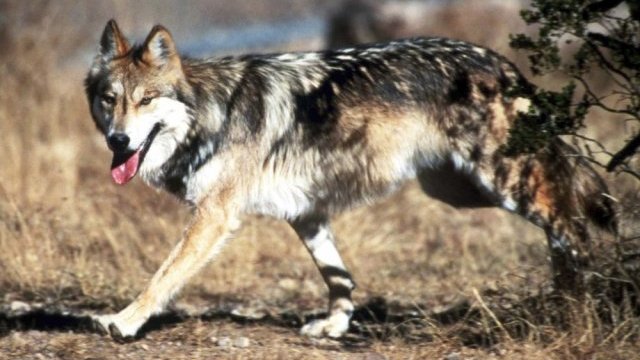Buscar
Director: Froilán Meza Rivera
redaccion@cronicadechihuahua.com
La Crónica de Chihuahua - Relatos urbanos, ciencia, cultura y noticias.
New report exposes border wall threats to international wildlife conservation efforts
** “Too many politicians in D.C. are supporting a border wall without having any idea of how it will actually impact conditions on the ground,” said Katie Davis, Wildlands Network’s Western Director.
La Crónica de Chihuahua
Noviembre de 2017, 13:00 pm
Posted by Paula MacKay
Tucson, AZ (November 1, 2017).- A new report released today by Wildlands Network highlights how 4 wildlife species native to the U.S.-Mexico borderlands are critically imperiled by existing and proposed border wall construction.
Four Species on the Brink summarizes habitat, population data, and bi-national conservation efforts for 4 keystone borderlands species in the Sonoran Desert and Sky Islands regions of Arizona and New Mexico: Sonoran pronghorn, black bear, jaguar and Mexican wolf. In addition to providing the most up-to-date habitat maps for each species, the report specifically identifies threats posed by existing and proposed border wall structures based on the best available scientific data being used by government agencies and NGOs on both sides of the border.
“Too many politicians in D.C. are supporting a border wall without having any idea of how it will actually impact conditions on the ground,” said Katie Davis, Wildlands Network’s Western Director. “Our report signifies the first comprehensive examination of how wildlife native to America—celebrated and conserved by people on both sides of the border—are being imperiled by ineffective and unnecessary policies coming out of Washington.”
Four Species on the Brink was produced in response to increased, pro-border wall rhetoric from many American politicians—most of whom do not represent citizens from the borderlands, and are not familiar with the ongoing success of collaborative, bi-national conservation projects or the current impacts of structures that already stretch across large sections of the border. The report highlights ongoing work by American and Mexican federal and state agencies, NGOs, and private landowners to conserve the highlighted species, 3 of which are listed as “endangered” under the U.S. Endangered Species Act.
“With illegal immigration currently at its lowest rate in 17 years, there is absolutely no need for such an astronomically expensive and ineffective wall that will only end up stopping the magnificent animals that have roamed across this continent since long before humans ever arrived,” said Myles Traphagen, Borderlands Program Coordinator for Wildlands Network.
Key findings about the impacts of the border wall on these 4 sensitive species include:
**Sonoran pronghorn populations could be isolated from each other and prevented from reaching forage and water, leading to a decline in genetic diversity and die-offs during drought;
**jaguars could be prevented from dispersing north to the U.S., hindering recovery efforts currently underway;
**black bears could be prevented from reaching water, forage, and mates, leading to population declines in this subspecies and increased human conflict, and;
**Mexican wolf populations in the U.S. and Mexico could be permanently divided, decreasing genetic diversity and increasing the chance of local extinction in the wild.
©2024 La Crónica de Chihuahua - Relatos urbanos, ciencia, cultura y noticias
La Crónica de Chihuahua es un diario independiente, enfocado a describir las singularidades y la cotidianidad de la comunidad chihuahuense.























